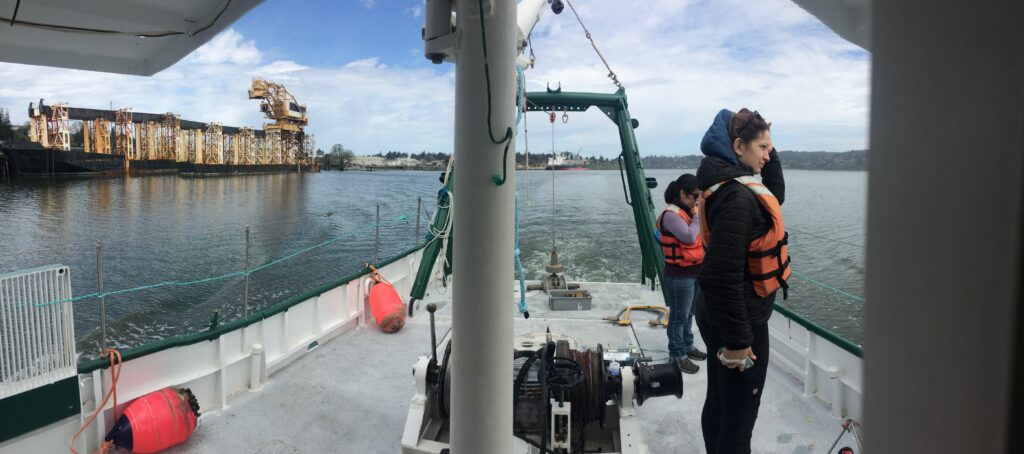Coos Bay is an estuary along the southern Oregon Coast which holds a distinction as the largest estuary between the Columbia River and San Francisco Bay. It provides key services including port facilities for regional lumber and fishing industries, tidal wetlands, and oyster silviculture. The estuary has been modified by developments including dredging and reclamation for more than 150 years, which has impacted the flow of water and sediments throughout the estuary.

a protected portion of the Coos Bay Estuary
In 2017-2020, we collaborated with researchers at the University of Oregon (Dr. Dave Sutherland, lead PI), Woods Hole Oceanographic Institute, and the South Slough National Estuarine Research Reserve to observe and model hydrodynamics and resulting sediment transport in the system. This work, which was funded by NOAA NERRS, addressed modern exchange flow processes (Conroy et al., 2020) as well as contrasting tidal dynamics and resultant sediment dynamics for a model representing the estuary in the mid-1800s compared to a present-day model (Eidam et al., 2020, 2021).

Presently we are working on a new NOAA NERRS project to study sedimentation patterns and rates. Postdoctoral scholar Dr. Molly Keogh (University of Oregon) is using short (~10-cm) cores and short-lived isotope measurements to assess ephemeral and/or-long-term deposition and during rainstorm events and fairweather periods, with an eye toward where short-timescale seabed changes are occurring which may impact eelgrass and/or oyster restoration efforts. Recent MS grad Tyler Souza (UNC) used longer (~30-80-cm) cores and Pb-210 isotope geochronologies to assess the history of sedimentation related to disturbances like logging and dredging over the past 100 years, and assess spatial variability in different types of intertidal flats.

Project publications
Keogh, M., Sutherland, D., Schmitt, J., Souza, T., Eidam, E., Ralston, D., & Helms, A. (2021, December). Estuaries on the Edge: Sediment Dynamics and Resiliency of US Pacific Coast Wetlands. In AGU Fall Meeting Abstracts (Vol. 2021, pp. EP33C-08).
Eidam, E. F., Sutherland, D. A., Ralston, D. K., Conroy, T., & Dye, B. (2021). Shifting sediment dynamics in the Coos Bay Estuary in response to 150 years of modification. Journal of Geophysical Research: Oceans, 126(1), e2020JC016771.
Eidam, E.F., Sutherland, D.A., Ralston, D.K., Dye, B., Conroy, T., Schmitt, J., Ruggiero, P. and Wood, J. (2020). Impacts of 150 years of shoreline and bathymetric change in the Coos Estuary, Oregon, USA. Estuaries and Coasts, pp.1-19.
See also:
Conroy, T., Sutherland, D. A., & Ralston, D. K. (2020). Estuarine exchange flow variability in a seasonal, segmented estuary. Journal of Physical Oceanography, 50(3), 595-613.
Sutherland, D. A., & O’Neill, M. A. (2016). Hydrographic and dissolved oxygen variability in a seasonal Pacific Northwest estuary. Estuarine, Coastal and Shelf Science, 172, 47-59.
—————————————
This project is funded by NOAA NERRS


